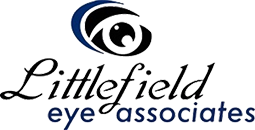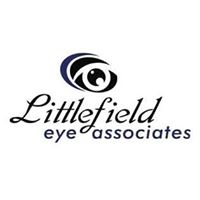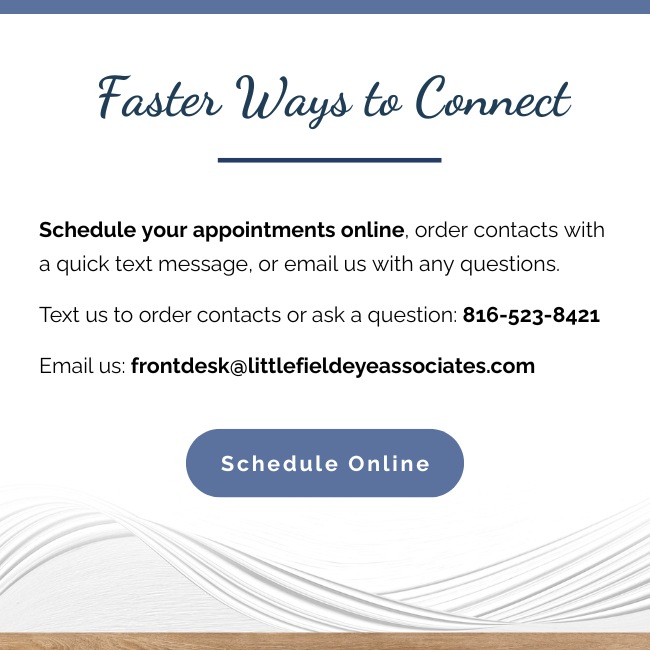Vision problems don’t just make it harder to see—they can significantly impact daily life and overall well-being. Presbyopia, myopia, and astigmatism are all refractive errors that affect your vision. In all three cases, the light that enters the eye doesn’t hit the back of the eye the way it should, resulting in blurry vision.
The difference between presbyopia, myopia, and astigmatism lies in how they impact vision. Presbyopia impacts near vision, myopia impacts distance vision, and astigmatism impacts vision at all distances.
Fortunately, all three conditions are common refractive errors, so they’re easy for your optometrist to correct with glasses, contact lenses, or surgery.
What Are Refractive Errors?
When light enters a healthy eye, the cornea (the clear front part of the eye) and lens focus that light directly onto the retina at the back of your eye, creating a clear image for your brain. Think of this as adjusting the focus on a camera lens. If the eye’s shape or curvature isn’t perfect, the light bends (or refracts) improperly, resulting in out-of-focus vision.
The four main types of refractive errors are presbyopia (age-related blurry near vision), myopia (nearsightedness), hyperopia (farsightedness), and astigmatism (distorted or blurry vision at all distances). Each condition results from a unique issue with how light is refracted in the eye.
Presbyopia
Presbyopia, often called “aging eyes,” makes it harder for you to focus on close objects as you age. This condition typically causes blurry near vision, making tasks like reading texts on your phone or threading a needle difficult.
Presbyopia occurs when the eye’s lens loses flexibility. Over time, the lens hardens and can’t change shape as efficiently to focus on close objects. Anyone over the age of 40 is at risk of developing presbyopia—regardless of whether they’ve had perfect vision their whole life or already wear glasses for another refractive error.
Effective Treatments
The go-to fix for presbyopia is corrective lenses. Options include:
- Reading glasses for light magnification
- Bifocals that correct both near and far vision
- Progressive lenses for a seamless transition between prescriptions
Monovision LASIK is another option to consider, where one eye is corrected for distance vision and the other for near vision, offering a practical solution for those seeking freedom from glasses.
Myopia & Hyperopia
While presbyopia develops with age, myopia and hyperopia are more common refractive errors that show their face starting in childhood.
- Myopia (Nearsightedness) makes distant objects appear blurry, while close objects stay clear.
- Hyperopia (Farsightedness) causes nearby objects to look blurry, while faraway objects remain clear.
For instance, if your child struggles to see the board at school but has no issues reading a book, they might have myopia. On the other hand, hyperopia may make it challenging to focus on close tasks like reading or drawing.
These conditions occur due to the shape of the eye:
- Myopia happens when the eyeball is too long, causing light to focus in front of the retina.
- Hyperopia occurs when the eyeball is too short, meaning light focuses behind the retina.
Who Is at Risk?
Genetics play a significant role. If one or both parents have myopia or hyperopia, it’s more likely that their children will inherit these conditions. Increased screen time and less outdoor activity in children are also contributing factors to myopia.
Effective Treatments
Common treatments include:
- Prescription glasses or contact lenses to refocus light onto the retina
- Orthokeratology (Ortho-K), which uses special contact lenses worn overnight to temporarily reshape the cornea
- LASIK eye surgery for permanent correction
Early diagnosis is key, especially for children, in whom untreated myopia tends to worsen over time.
Astigmatism
Astigmatism often goes hand-in-hand with myopia or hyperopia, but it can also exist on its own. Astigmatism occurs when the cornea or lens is irregularly shaped, resembling more of a football than a smooth sphere.
This irregular shape prevents light from focusing evenly on the retina, distorting or blurring vision at all distances. Instead of round or sharply defined objects, you might see everything as slightly stretched, shadowed, or out of focus. For example, lights at night may appear as elongated streaks rather than round orbs.
Astigmatism can occur from birth or develop due to eye injury or surgery. The condition is common and it affects people of all ages. If one parent has astigmatism, their child is at a higher risk. Regular screenings are essential for early detection.
Effective Treatments
Options for treating astigmatism include:
- Custom-toric glasses or contact lenses to correct irregular curvature
- LASIK or PRK Surgery for reshaping the cornea
- Specialty contact lenses like rigid gas-permeable lenses for severe cases
How to Manage Refractive Errors
While refractive errors can’t be reversed, they can be successfully managed. Here’s how:
- Routine Eye Exams: Regular exams can detect vision changes and ensure you get updated prescriptions when needed.
- Invest in Corrective Lenses: Glasses or contacts remain the easiest way to correct vision for all refractive errors.
- Surgery: LASIK, PRK, or other surgical options can enhance vision and, in many cases, eliminate the need for lenses.
Regular follow-ups with an optometrist or ophthalmologist are essential for maintaining eye health and ensuring effective treatment.
The Key Differences Between Presbyopia, Myopia, & Astigmatism (TLDR)
| Condition | Vision Impact | Key Cause | Age of Onset |
| Presbyopia | Blurred near vision | Stiff lens | Begins around 40 |
| Myopia | Blurred distance vision | Long eyeball | Childhood onset |
| Hyperopia | Blurred near vision | Short eyeball | Childhood onset |
| Astigmatism | Distorted/blurry vision | Irregular cornea/lens | Any age |
Take the Next Step in Protecting Your Vision
Understanding the differences between presbyopia, myopia, and astigmatism gives you the tools needed to address each condition effectively. At Littlefield Eye Associates, we understand that proper care and treatment can make these common refractive errors manageable. Contact us today to schedule an eye exam for your or your child.





